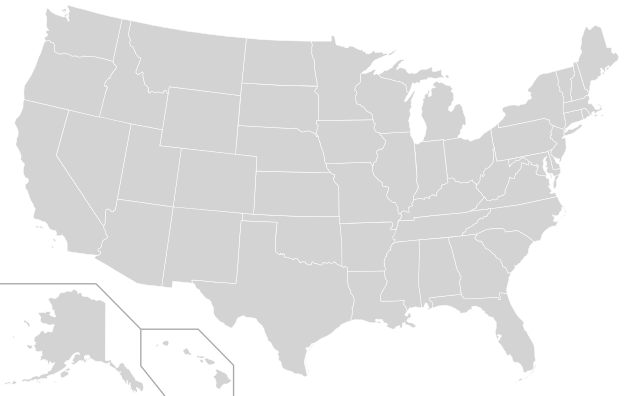
Leo Kolivakis is a blogger, trader and independent senior pension and investment analyst. This post was originally published at Pension Pulse.
Barry Critchley of the National Post reports, Pension solvency dipped slightly in 2015, Mercer report shows:
The poor equity market performance, the continued decline in long-term bond yields and new mortality tables that reflect increased life expectancy, have all combined to cause a slight decline in the funded status of the country’s pension plans in 2015. The only good news: the funded status of the 611 plans covered in the Mercer study was improved by the positive impact of the decline in the Canadian dollar on foreign asset returns.
That’s the two key conclusions contained in a report by Mercer, a pension consulting company that was released Tuesday. At the end of 2015, Mercer said that the “median solvency ratio of the pension plans” of its clients stood at 85 per cent, down from 88 per cent one year earlier.
A similar result applied when an alternative measure, The Mercer Pension Health Index, which represents the solvency ratio of a hypothetical plan, was used. That measure finished the year at 93 per cent down from 95 per cent at the end of 2014. In parts of 2014 and 2015 the same measure – that shows the ratio of assets to liabilities for a model pension plan – posted a solvency ratio of more than 100 per cent.
According to its analysis, a typical balanced pension portfolio would have returned 2.9 per cent during the fourth quarter and 5.3 per cent for 2015.
“There was considerable variability in the financial performance of pension plans in 2015,” said Manuel Monteiro, leader of Mercer’s Financial Strategy Group. “Pension plans with significant Canadian equity holdings and those that hedge their foreign currency exposure experienced larger than average declines in their solvency ratio.”
In its report, Mercer said that with “weak economic conditions continuing to persist and central bankers discussing the possibility of negative interest rates, plan sponsors are coming to the conclusion that they cannot count on higher interest rates to erase their lingering pension deficits.”
Mercer noted one possible solution: pension plans need to better understand the risks that they face, and establish a robust risk management strategy to manage them.
The report noted that at least four provincial governments have recognized the challenging economic conditions and are moving towards lessening the funding burden for defined benefit pension plan sponsors. Mercer said that Quebec is making the most significant changes “by moving away from a solvency-based funding target starting in 2016,” while Alberta and British Columbia have also introduced helpful changes in the past few years.
As for Ontario, Mercer said that it has recently announced plans to develop a set of reforms that would “focus on plan sustainability, affordability and benefit security while balancing the interests of pension stakeholders.”
I agree with the findings of Mercer’s report. First and foremost, plan sponsors cannot count on higher interest rates to erase lingering pension deficits. This is especially true now that the global deflation tsunami is upon us and negative rates are right around the corner in Canada and possibly the U.S. if things get really bad.
Importantly, deflation will decimate all pensions because it will drive rates around the world to negative territory and bring asset values to new lows, including those of illiquid alternative assets where pensions have increased their exposure to take on more risk in order to achieve their objective.
But when it comes to pension deficits, it’s rates that matter most because the duration of liabilities is a lot bigger than the duration of assets so a decline in rates disproportionately hurts pensions a lot more than a decline in asset values.
Second, the Mercer report notes the following:
“There was considerable variability in the financial performance of pension plans in 2015,” said Manuel Monteiro, leader of Mercer’s Financial Strategy Group. “Pension plans with significant Canadian equity holdings and those that hedge their foreign currency exposure experienced larger than average declines in their solvency ratio.”
In terms of Canadian equity exposure, the typical Canadian DB plans aren’t big enough to be as globally diversified as Canada’s Top Ten across public and private markets, which explains why they underperform them over a very long period.
As far as currency risk, when I covered CPPIB’s record results in FY 2015, I noted that the value of its investments got a $7.8-billion boost during that fiscal year from a decline in the Canadian dollar against certain currencies, including the U.S. dollar and U.K. pound. I also noted that even though PSP had solid results in FY 2015, it partially hedges (50% hedged) its foreign currency exposure, which is one reason why it didn’t perform as well as CPPIB (they have the same fiscal year period and PSP is now reviewing its currency hedging policy).
I remember a conversation I had with Jim Keohane, CEO of HOOPP, on currency risk and hedging policy where he told me “from a strict asset-liability standpoint, it’s better not to hedge F/X risk.”
If you ask me, currency hedging is extremely important in a deflationary world, but you need to hire smart people who know how to make money in currencies and who can guide you on future trends in currencies (I have never heard of a star currency trader at Canada’s Top Ten! There were one year wonders but nobody who can consistently make money trading currencies).
It’s worth noting that I told my readers about Canada’s perfect storm back in January 2013 and continued to warn everyone to short the loonie in December of that year because I saw oil prices going much lower. Given my Outlook 2016, I see no reason to change my views on Canada, oil or the loonie (I see it going to 66 cents US and settling around 66-68 cents).
It’s also worth noting that if global deflation risks rise, investors will seek refuge in good old U.S. bonds, which will propel the mighty greenback even higher. King Dollar is already off to a great start in 2016 but this is a double-edged sword because as the USD rises, corporate profits decline and so do import prices, reinforcing deflationary headwinds in the US. and around the world.
This brings me to another topic the Mercer report discusses, namely, the importance of risk management. Pensions have long-dated liabilities and a much longer investment horizon than mutual funds, hedge funds and private equity funds. So when you see Canada’s big pensions betting on energy, they’re not looking to make a quick buck.
But there are structural factors at work here that present a different set of risks to pensions altogether. In a deflationary world, risk management is crucial and I’m not just talking about VaR and quantitative analysis, you also need to have great thinkers who are able to qualitatively assess important structural and cyclical factors that are shaping the investment landscape in the short-run and long-run (again, read my Outlook 2016 for more insights).
Lastly, a small comment on “Quebec moving away from a solvency-based funding target starting in 2016.” I’m very uncomfortable with this and think it’s another way to mask Quebec’s serious debt crisis. When it comes to solvency-based funding, I prefer if we all stop the charade and go Dutch on pensions. It will be tough and it will hurt, but I prefer living in reality than clinging to a rate-of-return fantasy or moving away from a solvency-based funding target.
Photo credit: “Canada blank map” by Lokal_Profil image cut to remove USA by Paul Robinson – Vector map BlankMap-USA-states-Canada-provinces.svg.Modified by Lokal_Profil. Licensed under CC BY-SA 2.5 via Wikimedia Commons








